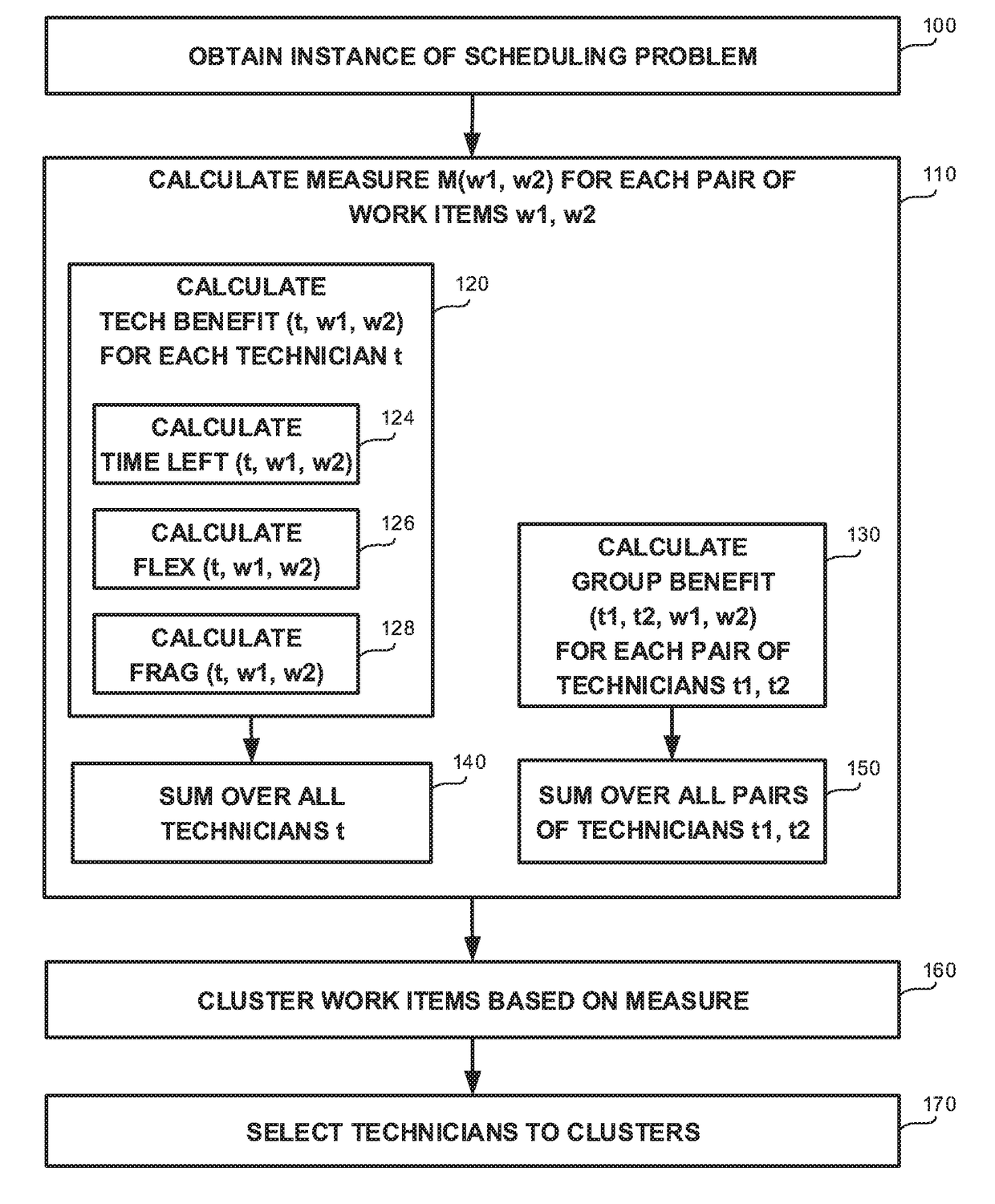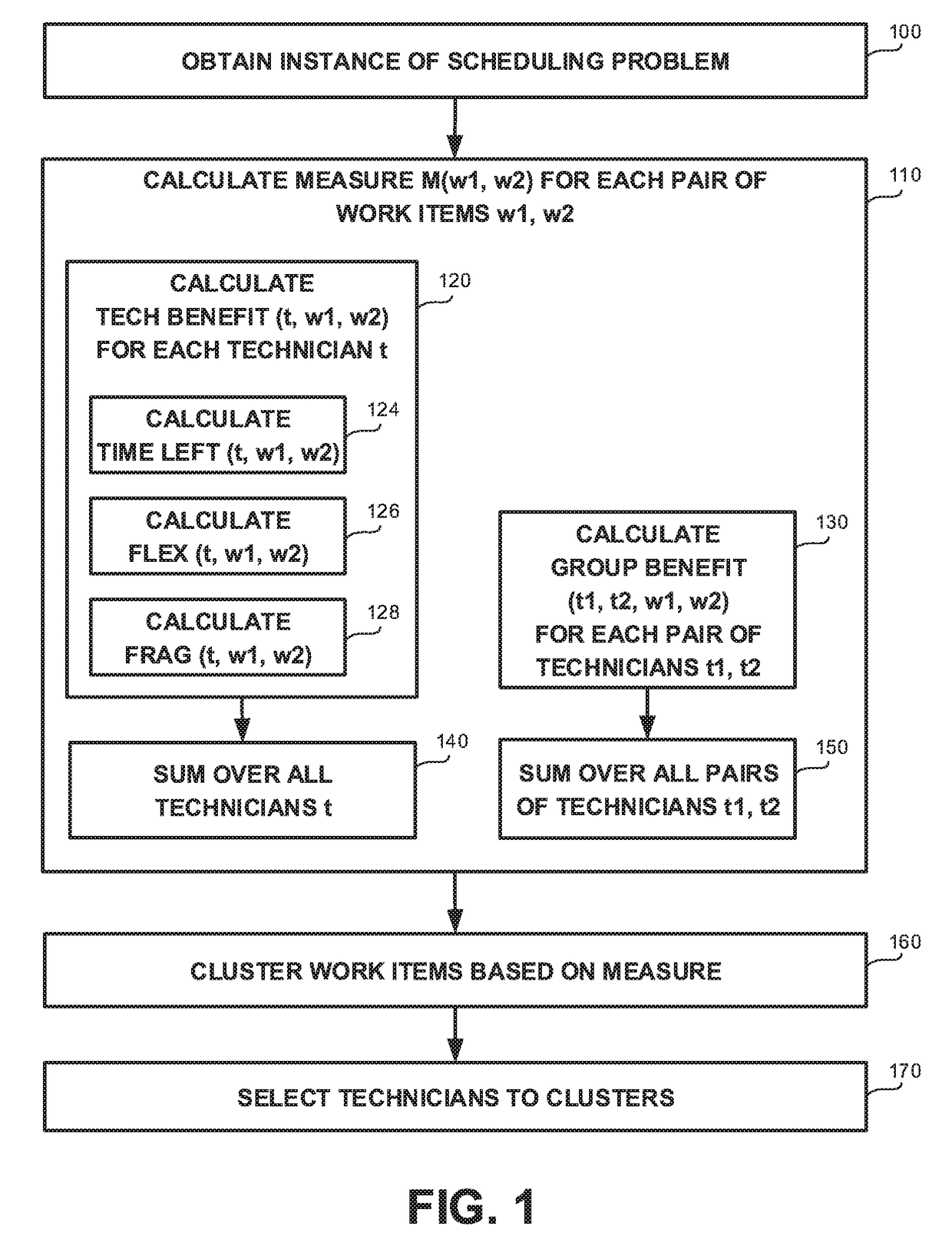Decomposition of multisite heterogeneous workforce scheduling problems
a scheduling problem and heterogeneous technology, applied in probabilistic networks, instruments, data processing applications, etc., can solve the problems of inapplicability to real-life industrial cases, ineffective optimal solutions, and computationally challenging mobile workforce scheduling
- Summary
- Abstract
- Description
- Claims
- Application Information
AI Technical Summary
Benefits of technology
Problems solved by technology
Method used
Image
Examples
Embodiment Construction
[0014]One technical problem dealt with by the disclosed subject matter is to decompose a scheduling problem with heterogeneous workforce and / or multiple depots into smaller problem instances, whereby a feasible and efficient solution to the original problem may be obtained by solving each of the smaller problems and aggregating their solutions together.
[0015]A scheduling problem is a problem of scheduling tasks to agents, e.g., assigning work items to technicians for execution. In mobile workforce scheduling problems, the technicians are mobile and required to arrive at the location where the work item is to be executed, thus the traveling time spent also has to be taken into account in the scheduling. In multisite scheduling problems there are multiple depot locations from which technicians may originate and / or to which they return after completion, thus leading to differences in traveling times among technicians with respect to given work items. In heterogeneous workforce scheduli...
PUM
 Login to View More
Login to View More Abstract
Description
Claims
Application Information
 Login to View More
Login to View More - R&D
- Intellectual Property
- Life Sciences
- Materials
- Tech Scout
- Unparalleled Data Quality
- Higher Quality Content
- 60% Fewer Hallucinations
Browse by: Latest US Patents, China's latest patents, Technical Efficacy Thesaurus, Application Domain, Technology Topic, Popular Technical Reports.
© 2025 PatSnap. All rights reserved.Legal|Privacy policy|Modern Slavery Act Transparency Statement|Sitemap|About US| Contact US: help@patsnap.com



